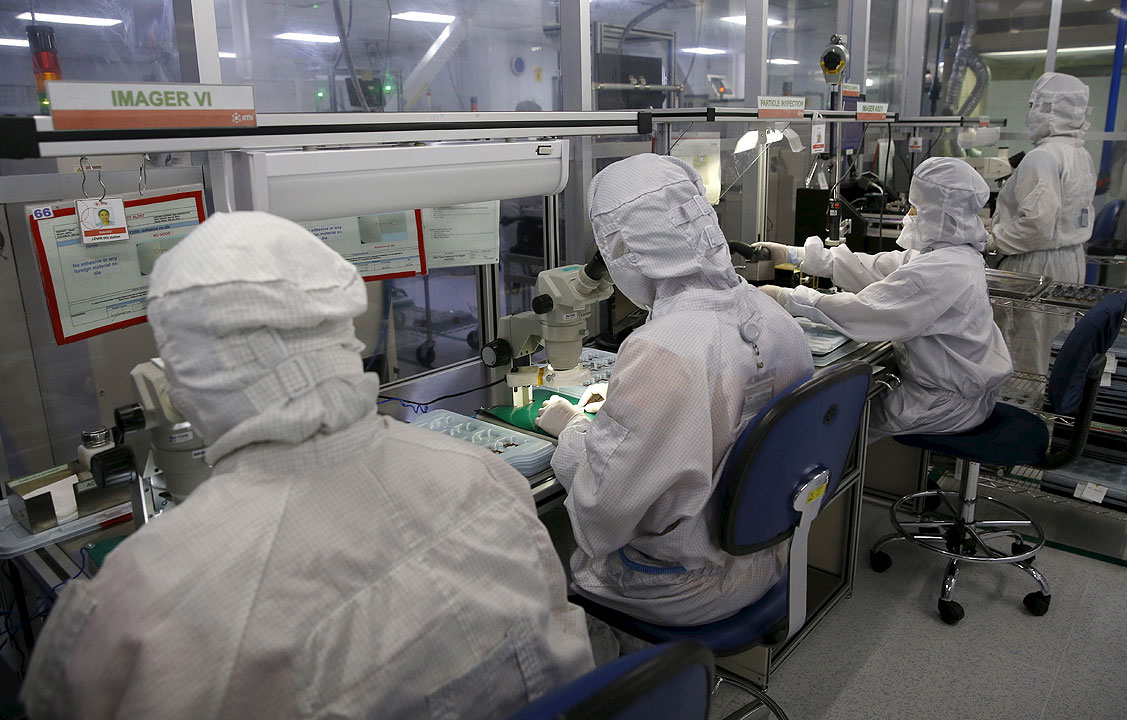Factory activity improves in Sept.

By Diego Gabriel C. Robles
THE PHILIPPINES’ manufacturing sector expanded for an eighth month in a row in September, as better demand led to growth in output and new orders, S&P Global said on Monday.
The S&P Global Philippines Manufacturing Purchasing Managers’ Index (PMI) reading stood at 52.9 in September, rising from 51.2 in August and the seven-month low of 50.8 in July.
A PMI reading above 50 denotes improvement in operating conditions compared with the preceding month, while a reading below 50 signals deterioration.
 “Firms noted that an increase in customer demand allowed production levels and factory orders to grow for the first time since June,” Maryam Baluch, economist at S&P Global Market Intelligence, said in a statement.
“Firms noted that an increase in customer demand allowed production levels and factory orders to grow for the first time since June,” Maryam Baluch, economist at S&P Global Market Intelligence, said in a statement.
“Adding to the good news, inflationary pressures, which have been uncomfortably high in the past couple of months, moderated in the latest survey period, hinting that inflation may have peaked,” she added, referring to the inflation print easing to 6.3% in August from 6.4% in July.
Among its Southeast Asian neighbors, the Philippines’ PMI reading was once again in the middle of the pack, behind Singapore (58.5), Thailand (55.7) and Indonesia (53.7) but better than Vietnam (52.5), Malaysia (49.1), and Myanmar (43.1).
The headline PMI measures manufacturing conditions through the weighted average of five indices: new orders (30%), output (25%), employment (20%), suppliers’ delivery times (15%) and stocks of purchases (10%).
S&P Global noted the Philippines’ manufacturing PMI was the fastest in three months, mostly due to moderate improvements in output and new orders.
“According to anecdotal evidence, greater client appetite helped boost factory orders, with firms then scaling up production,” it said.
However, S&P Global noted that growth might have only been driven by domestic demand, as foreign demand contracted for the seventh straight month. This reflected a slump in demand from China and other major economies amid a global slowdown.
“Though Filipino manufacturers saw inflows of new business increase during September, foreign demand for Filipino manufactured goods weakened,” it added.
Still, as a result of better demand and output, firms purchased additional inputs for production.
According to S&P Global, firms are expecting greater demand so they increased both pre- and post-production stocks more quickly in September than in August.
Manufacturing firms also expanded their workforce for the fifth straight month, with the pace in September being the second fastest in the last five months.
However, vendor performance deteriorated for a second consecutive month, while average lead times lengthened to its highest in six months, S&P Global said, citing shipping delays and port congestion.
“If supplies can’t be delivered, this could slow overall production as raw materials and intermediate components can’t be sourced immediately,” said ING Bank N.V. Manila Senior Economist Nicholas Antonio T. Mapa.
Still, with improved demand conditions and regardless of persistent supply chain pressures, producers reported the first rise in work outstanding since February 2016.
“That said, inflation rates remained sharp and could still be harmful to demand conditions, with firms citing rising material and energy prices, alongside an unfavorable exchange rate, which could place upward pressure on costs,” Ms. Baluch said, mentioning how production is still being impeded by supply chain issues.
The Bangko Sentral ng Pilipinas (BSP) estimated a 6.6-7.4% print in September, higher than 6.3% in August and way beyond its target of 2-4%.
A median estimate from a BusinessWorld poll of 13 analysts suggested that headline inflation will likely reach a fresh peak of 6.7% in September amid higher electricity rates and food prices, as well as the continued weakening of the peso versus the dollar.
During the data collection period of Sept. 12 to 23, S&P Global said that inflationary pressures eased, with input price inflation specifically easing to a 20-month low.
“That said, the pace of charge inflation was still historically elevated with firms choosing to pass costs on to customers,” it added.
Manufacturing firms remained positive despite supply chain disruptions, as demand conditions improved, with the degree of optimism at its peak since August 2018.
“Overall, sustained growth across the sector has meant that firms are largely optimistic in regards to expansion in output in the future,” Ms. Baluch said.
ING’s Mr. Mapa attributed the optimism to the further reopening of the economy as the government already signaled how lockdowns are in the rear view.
However, “rising inflation could dampen demand eventually and slow PMI in the future,” he said in a Viber message. “The general consensus that recession for developed markets is around the corner is also a concern.”
In a note, Rizal Commercial Banking Corp. Chief Economist Michael L. Ricafort said that manufacturers increased their production activities amid anticipated demand in the fourth quarter due to the Christmas season, as well as the further easing of movement restrictions.
Mr. Ricafort noted, however, that the 52.9 PMI reading is still below the four-year high of 54.3 recorded in April, as the manufacturing sector is still weighed down by elevated inflation, higher interest rates, a weaker peso, and risks of a recession in the US, as well as a growth slowdown in China.
Likewise, economist John Paolo R. Rivera from the Asian Institute of Management said that increased demand as the economy reopened and the approaching holiday season drove the uptick in PMI.
“[Yet] this would put pressure on inflation if manufacturing cannot cope with demand,” he added via Viber.



